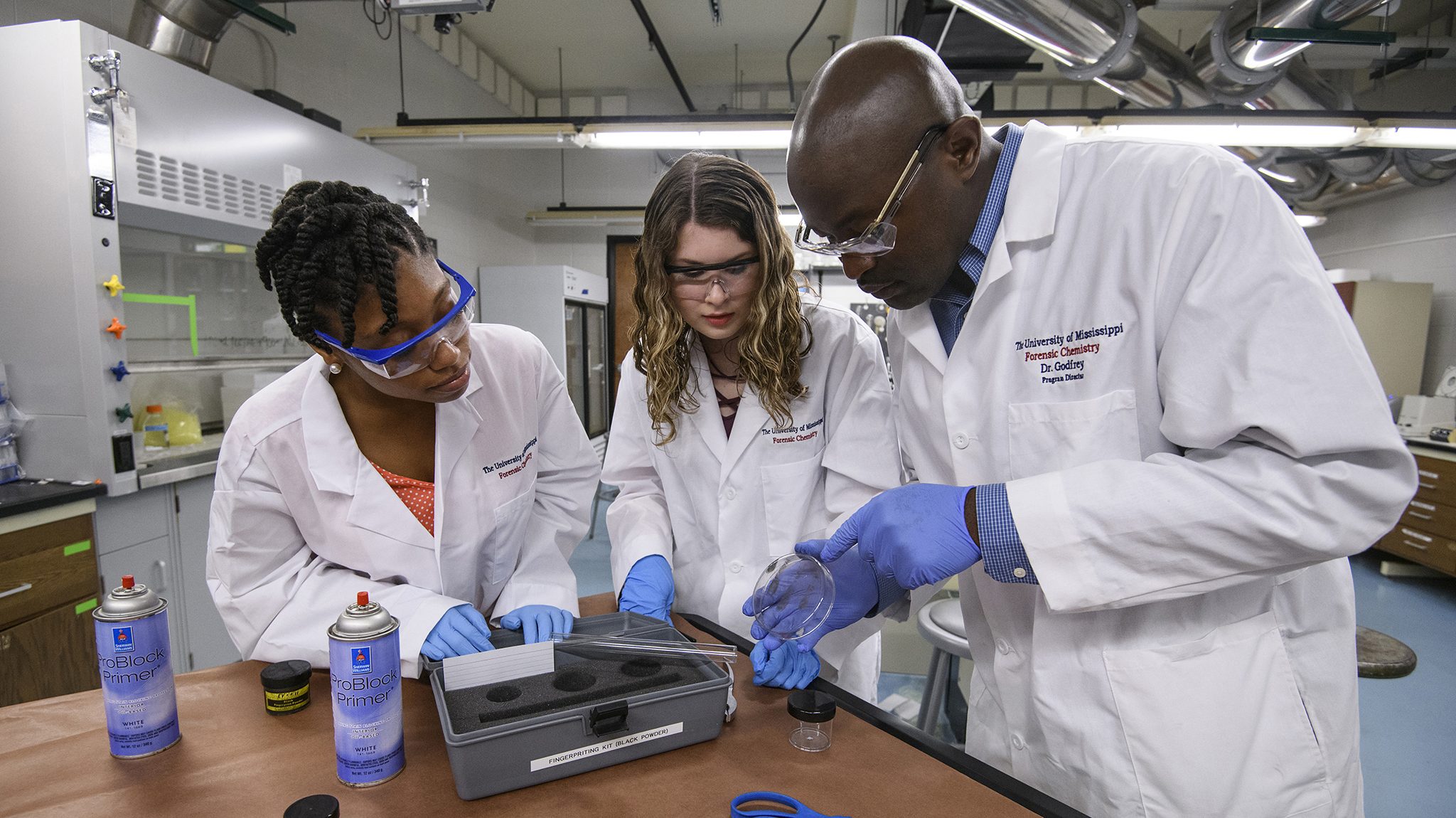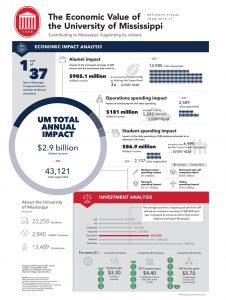
The University of Mississippi’s annual economic impact totals $2.9 billion and enables 43,121 jobs across the state, which means that one out of every 37 jobs in Mississippi is supported by the activities of UM and its students. A new report of the university’s impact also revealed a return of $4.40 in state tax revenue and public sector savings for every dollar in state funds that supports the university. Photo by Thomas Graning/Ole Miss Digital Imaging Services
OXFORD, Miss. – The University of Mississippi’s annual economic impact totals $2.9 billion and enables 43,121 jobs across the state, which means that one out of every 37 jobs in Mississippi is supported by the activities of UM and its students.
A new report of the university’s impact also revealed a return of $4.40 in state tax revenue and public sector savings for every dollar in state funds that supports the university.
The study, which was commissioned by the university and conducted by a nationally recognized economic consulting firm, analyzed data from fiscal year 2016-17 to measure the economic impacts created by UM and the benefits the university generates in return for investments made by its key stakeholder groups: students, taxpayers and Mississippi society.
“As a publicly supported institution, the University of Mississippi exists to serve the people and the economy of our state,” Interim Chancellor Larry Sparks said. “This study affirms the university’s substantial impact in Mississippi supporting industry and benefiting society, from an expanded economy to improved quality of life.”
The study used a two-pronged approach that involved an economic impact analysis and an investment analysis. The $2.9 billion in income UM added to the Mississippi economy in the analysis year represents the sum of impacts from operations, research and medical center spending; startup and spinoff companies; visitor and student spending; and alumni.
It represents approximately 2.6 percent of Mississippi’s total gross state product.
In FY 2016-17, Mississippi taxpayers provided $121.5 million in funding for UM Oxford and regional campuses. In return, taxpayers will receive an estimated present value of $442.9 million in added tax revenue stemming from students’ higher lifetime earnings and increased business output.
In addition, $96.9 million in taxpayer benefits are generated by the improved lifestyles of Ole Miss students and the corresponding reduction in government services. This means that for every dollar of public money invested in educating students, taxpayers receive an average of $4.40 in return.
In other words, taxpayers enjoy an annual rate of return of 10.6 percent.
 “The results of this study highlight the value of the University of Mississippi from multiple perspectives,” said William Nicholas, UM director of economic development. “Businesses benefit from increased spending by UM and a steady flow of top talent, graduates enjoy a lifetime of higher earnings and state taxpayers benefit through increased tax revenue.
“The results of this study highlight the value of the University of Mississippi from multiple perspectives,” said William Nicholas, UM director of economic development. “Businesses benefit from increased spending by UM and a steady flow of top talent, graduates enjoy a lifetime of higher earnings and state taxpayers benefit through increased tax revenue.
“Investing in higher education is critical to advancing our state.”
The study also predicted that students attending UM in FY 2016-17 will receive $1.8 billion in higher future earnings over their working lives as a result of their education and training. This translates into a return of $3.30 in higher future earnings for every dollar that students invest in their education.
Among noneducation industry sectors, the university delivered the greatest impact in the health care and social assistance industry sector, supporting 13,496 jobs in FY 2016-17. Expenditures on medical center operations added a net $1.6 billion in added income to the state.
“Providing high-quality, specialized patient care throughout Mississippi, training the next generation of health science professionals, and researching new cures and innovative health care delivery models benefit our state and local economies,” said Dr. LouAnn Woodward, vice chancellor for health affairs at the UM Medical Center in Jackson. “The investment the state makes into its only academic medical center is returned several times over.”
The university enrolls more than 23,000 students and employs 13,489 people.
The “Analysis of the Economic Impact and Return on Investment of Education” study was conducted by Emsi, a leading provider of economic impact studies and labor market data to educational institutions, workforce planners and regional developers in the U.S. and internationally.
Data and assumptions used in the study are based on several sources, including the FY 2016-17 academic and financial reports from the university, industry and employment data from the U.S. Bureau of Labor Statistics and U.S. Census Bureau, outputs of Emsi’s Multi-Regional Social Accounting Matrix model, and a variety of studies and surveys relating education to social behavior.
To read the report, visit https://economicdevelopment.olemiss.edu/economic-impact/.